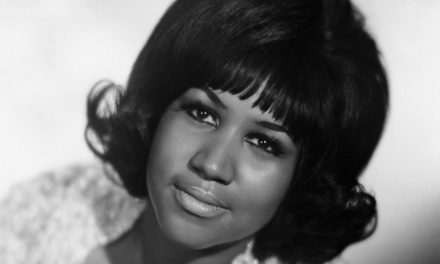Armenians and Armenian Americans have long been a part of Detroit’s rich cultural tapestry, and with them, these immigrants brought their unique musical sounds. Now there’s a documentary, “We Thrive,” that celebrates and chronicles the history of Armenian music in Detroit. The film, directed by filmmakers Lisa Hagopian and Eric Harabadian, makes its Michigan theatrical premiere at the Maple Theater at 7:30 p.m. Aug. 2.
Armenian music is characterized by its unique blend of Middle Eastern, Caucasian, and Western influences. Traditional Armenian instruments such as the duduk (a double-reed woodwind instrument), kanun (a plucked string instrument), and oud (a pear-shaped string instrument) have played a significant role in preserving the authentic sounds of Armenian music in Detroit.
RELATED: Fostering refugees: Ukrainian families find new home with metro Detroit Armenian community
The “We Thrive” documentary shines a light on the eclectic mix of Armenian-American musicians in metro Detroit and the common bond they share. We hear from the filmmakers behind the documentary about how the traditional music and instruments of Armenia continue to intertwine and influence the diverse music of local Armenian Americans today. Plus, watch a preview of the film.
Full Transcript:
Lisa Hagopian, Co-Director, “We Thrive”: Local guitarist Sean Blackman performs an Armenian-inspired tune. Our latest film about the Motor City music scene is “We Thrive.” Our previous films, “Nothing But Music,” follows working-class musicians, and “Paradise Bookie” took a look at the Detroit blues scene.
Eric Harabadian, Co-Director, “We Thrive”: I’ve been playing electric guitar in the band Chain Reaction, doing classic rock and blues for over 30 years. I’ve been around Armenian music most of my life, but I never really thought about playing it until now.
Lisa Hagopian: Armenians have been in Detroit since the very late 1800s. After the Armenian genocide, many more arrived. My own family has been here for over a hundred years.
Eric Harabadian: Despite Armenians’ tragic history. We’ve always thrived by way of music, classical, jazz, traditional folk, blues, hard rock, and every other genre. My mother was German, and my father was Armenian. When you make a film like this, you really take a deep dive into your heritage. It’s made me think a lot about the blending of those two cultures. In particular, I always felt like a fish out of water, yet I had a strong affinity for being Armenian at the same time. And whatever I was going through in my life, music has been there for me.
Hachig Kazarian, Nationally Renowned Clarinetist: I did my public-school education in Detroit. I did my secondary education at Cass Tech in Detroit. That was the time that Harry Begian was band director at Cass Tech. Everything that transpired at Cass was next to the professional level. Of course, we were kids. We were fearless. Diana Ross came from Cass Tech. Dennis Edwards, One of the Temptations, was in my classes. So it was a school that fed the music industry, whether it was classical music or pop music.
Eric Harabadian: Juilliard-trained clarinet virtuoso Hachig Kazarian, who has entertained thousands nationwide, talks about some influences on Armenian music.
Hachig Kazarian: As a nationality that lived surrounded by Muslims, they had somehow to intermingle with the Muslims, the Turks. There has to be Armenian music that got projected there and Turkish music that got projected to be Armenian. So there is some similarity. Some Armenians don’t like to hear music that has that Middle Eastern sound. Armenian church music is a very pure Armenian music, and a lot of our music sounds Middle Eastern. People will identify Armenian music with the Mass, the Badarak, on Sunday.
Vaughn Masropian, Traditional Armenian vocalist, Percussionist, Oudist: In the Middle East, the oud is considered the queen of all instruments.
Eric Harabadian: Community leader, radio show host, and entrepreneur, Vaughn Masropian is also a vocalist, oudist, and percussionist. Vaughn, you’ve been a percussionist and vocalist with the band The Johnites.
Vaughn Masropian: Actually, the Johnites have been around for over 52 years. I fell in love with the oud. A very, very light instrument. It has 11 strings, and this is a dual-tone instrument, meaning there are two strings for each tone. A lot of the villages, they didn’t have amplifiers. Whenever the oud player had to play, the drum had to sort of tone down a little bit because it’s a softer instrument.
(Music)
So that was actually one of my mother’s favorite songs, Khentzori Zari Dagin. It’s a very old Armenian song about someone who saw his love sitting under the apple tree. This is a fretless instrument. So, obviously, you can get all the quarter tones that you would like. You can bend your notes. It’s similar to a violin. There are no frets here so the fingerboard is your-
Eric Harabadian: The sky’s the limit.
Vaughn Masropian: Yes, exactly.
Eric Harabadian: This is an instrument that’s over 20 years old. It was built in Turkey. Been working on this instrument for the last few months. I want to record with it. Doing it for our film. It’s a stern taskmaster, though, I’ll tell you because it’s been a real adjustment for me to learn how to play this.
Lisa Hagopian: Michiganders, Tia Mayhem, and Tanya Venom, educated at the Berklee School of Music, record on the song “American Sun” and appear in our film “We Thrive.”
Eric Harabadian: Even the music of hard rockers is influenced by their Armenian roots.
Tanya Venom, Stormstress: We have always felt different. Always. I mean, we were born twins. We were born different. We’ve always been into things off the beaten path. I mean, we’re musicians.
Tia Mayhem, Stormstress: I think it’s pretty awesome to put Armenian traditional music into modern hard rock. And everyone can hear it and be like, What’s that instrument? And eventually, it’ll become known that that’s the duduk. That’s Armenian.
Tanya Venom: Yeah, a lot of people don’t even know what a duduk is.
Tia Mayhem: Most people don’t know where Armenia is.
Eric Harabadian: Music coming from the Detroit area has many influences, including molds and beads from Armenian Americans, which inspired me to write the song “American Sun.”
Stay Connected:
Subscribe to One Detroit’s YouTube Channel and don’t miss One Detroit on Mondays and Thursdays at 7:30 p.m. on Detroit Public TV, WTVS-Channel 56.
Catch the daily conversations on our website, Facebook, Twitter @DPTVOneDetroit, and Instagram @One.Detroit
View Past Episodes >
Watch One Detroit every Monday and Thursday at 7:30 p.m. ET on Detroit Public TV on Detroit Public TV, WTVS-Channel 56.




